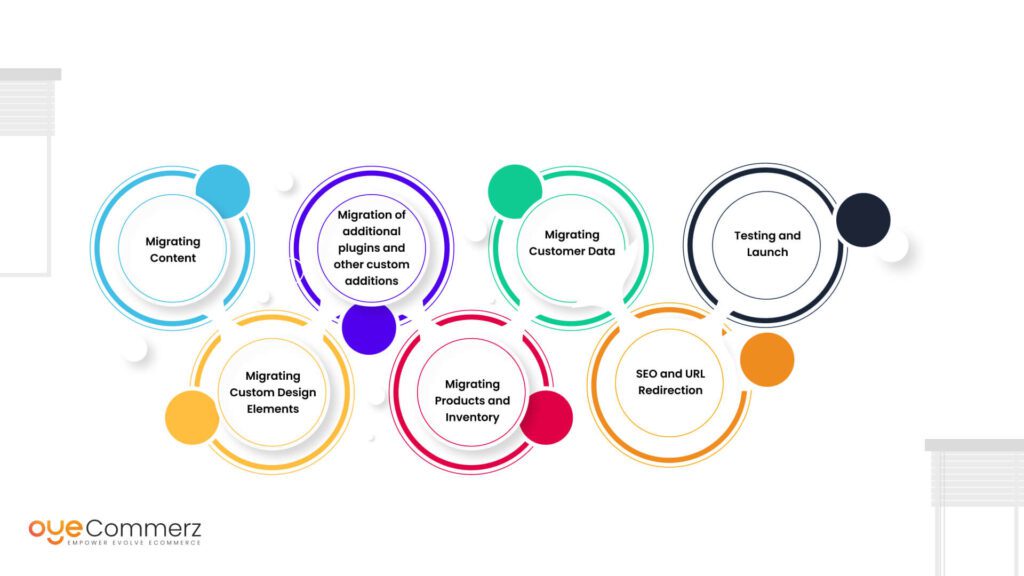Transitioning from WP to Shopify is an exciting step in optimizing your online store operations. As companies expand, choosing a solution that aligns with growth potential, user experience, and flexibility is essential. Shopify has emerged as a preferred choice for online merchants, providing unmatched adaptability, security, and user-friendliness. In this guide, we’ll explore why this migration is a game-changer, discuss the advantages, and provide practical tips to facilitate a smooth move.
1. Top Reasons to Transition from WP to Shopify
The combination of WordPress and WooCommerce, has served countless online stores. However, as businesses scale, challenges like plugin dependency, data risks, and technical complexities can hinder progress. Shopify, designed explicitly for digital retail, addresses these issues with an comprehensive, user-friendly solution. Statistics back this shift—Shopify hosts over 4.4 million websites globally, with a documented 10% increase in sales conversion rates for numerous merchants after migration.
2. Key Benefits of Shopify for E-commerce Success
Shopify’s robust ecosystem is tailored for expanding businesses. Its standout features include:
- Effortless Design Flexibility: Shopify provides over 80 professionally designed themes.
- Built-in Features: Capabilities such as Shopify Payments and built-in SEO save time and effort.
- International Expansion: Currency versatility and localization features empower businesses to reach global markets.
Additionally, Shopify boasts an availability percentage of 99.98%, guaranteeing your website remains accessible.
3. Getting Ready for Your WP-to-Shopify Transition
Prior to starting the migration process, evaluate your existing setup. Review inventory details, customer details, and SEO performance. Tools like Shopify’s Migration Kit or external tools help ease the transition. Create a detailed strategy, making sure all resources—product descriptions, images, and articles—are ready for seamless import.
4. The Importance of Accurate Data Migration
Transferring your data forms the foundation for a smooth transition. When moving from WordPress to Shopify, prioritize:
- Inventory Details: SKU, descriptions, and categories.
- Customer Data: Emails, order history, and custom fields.
- Search Engine Considerations: Retain meta tags, URLs, and redirects to maintain search rankings.
Leverage tools such as LitExtension to streamline data transfer while minimizing errors.
5. Tailoring Your Shopify Store to Fit Your Brand
Post-migration, personalizing your Shopify store helps it reflects your business identity. Take advantage Shopify theme customization of Shopify’s drag-and-drop editor to design pages effortlessly. Shopify's themes are mobile-responsive, ensuring a seamless UX across platforms—a key point, since 74% of online shopping is generated by mobile visitors.
6. How to Protect Your SEO Rankings When Switching Platforms
SEO is vital for preserving your online presence during migration. Shopify excels in SEO with clean URL structures, preloaded features, and smooth content management. Ensure:
- Set up URL forwarding for existing links.
- Optimize new pages with keyword-rich content.
- Use Shopify's apps Plug in SEO to monitor performance after the switch.
7. Essential Tests After Migrating to Shopify
Once the migration is complete, conduct thorough testing.
Check: - Website speed (Shopify delivers faster speeds in contrast with WP).
- Functionality of payment gateways and checkout processes.
- Adaptability across devices.
Quality assurance ensures your store delivers a smooth shopping experience from the start.
8. Case Study of a Successful Migration
An example of effective platform switching is Gymshark, a sportswear company that moved to Shopify. After the switch, the company experienced a 60% boost in mobile sales and reduced site downtime. This highlights Migrating online stores to Shopify the capabilities of Shopify in driving e-commerce growth.
9. Overcoming Common Migration Issues
Migration comes with challenges, such as data integrity and reconfiguring custom functionalities. However, Shopify’s robust support and third-party experts make overcoming these hurdles manageable. Partnering with experienced Shopify developers helps guarantee a trouble-free transition.
10. Making the Switch: The First Step Toward Success
Migrating from WordPress to Shopify marks a strategic approach to online retail. By focusing on growth, simplifying management, and enhancing the customer experience, Shopify enables companies to succeed in challenging industries.
Conclusion
Transitioning from WordPress to Shopify offers a smart solution that can significantly boost your online business performance. With a well-structured strategy, the right tools, and professional guidance, you can achieve new success milestones.
Excited to start the journey? Let’s discuss how our Shopify migration services can revolutionize your e-commerce platform. Get in touch today, or ask yourself: Is it time to seize Shopify’s advantages for your store?
